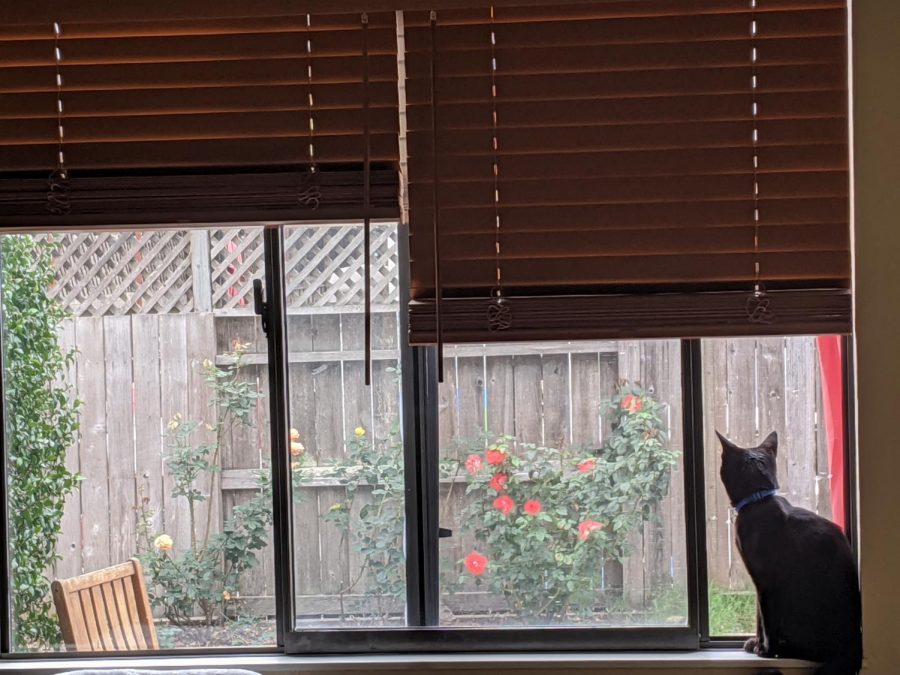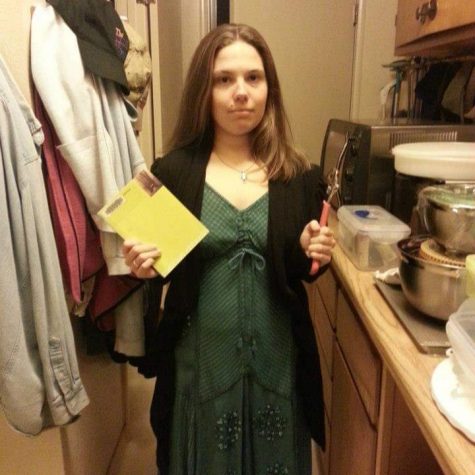Alexander Nordenso walks to the kitchen to get a snack after his Zoom class and finds his kitten Zuko playing in the spice cabinet. Broken bottles and flakes of seasonings litter the kitchen counter and floor, yet the cat is having the time of his life eating whatever tickles his fancy.
“He was still in the spice cabinet,” said Nordenso, a fourth-year Santa Rosa Junior College student. “Like ‘Hey, what’s up?’ That’s his legacy right there.”
Nordenso picked him up to get him out of the cabinet, and Zuko acted like he’d done nothing wrong.
This is perfectly on par for the young cat lovingly described by Nordenso as “a menace to society.”
“He’s a very confident cat, very mischievous,” said Nordenso. “I’m always watching out. If I hear something, I’m like, ‘He’s doing something that he shouldn’t.’”
Zuko learned early on how to open cabinets. Always curious, always on the hunt for fun, Zuko finds ways to entertain himself. He even figured out how to open the door to the garage — Nordenso’s family had to change the door handle.
Nordenso spent years trying to convince his father to let him get a cat, and last August, Nordenso finally won. He found Zuko through a Craigslist ad, and the cat quickly adapted to his new home.
“We just opened the cage, and he was checking the place out right away — no fear,” Nordenso said.
Since March 2020, demand for pets has surged all over the country. With people stuck in their homes, some started to look for a companionship to last beyond the pandemic, whether it be a cat, dog or even guinea pig.
Once animal shelters reopened last spring after the initial COVID-19 related shutdowns, they experienced high volumes of people looking to adopt pets. It was as though “Clear the Shelters Day” became a never-ending event. And shelters can’t keep up with demand. Although they have steady interest, they aren’t taking in as many animals.
The Humane Society of Sonoma County reported 1,405 adoptions in 2020, down from 1,838 the previous year. However, the number of animals entering the shelter dropped significantly, by about 30%. Rohnert Park Animal Shelter saw the same trend with a 33% drop as did Sonoma County Animal Services at 39%. Demand is higher but supply is lower.
“Nobody really knows why there are fewer,” said Asher Belden, Humane Society of Sonoma County adoption program manager. “There’s slightly fewer adoptions, but that’s because there are fewer animals. But the demand has greatly increased, absolutely.”
Rohnert Park Animal Shelter received 200 applications for a litter of four puppies within 24 hours of posting their availability.
“They would have garnered a ton of attention at any time, but how quickly it happened was unusual,” said Mickey Zeldes, shelter supervisor. “I hit post and within 10 minutes, the apps came pouring in.”
The applications came from people all over the West Coast, with some as far as Hawaii. The shelter has a foster-to-adopt policy for puppies to ensure they are neutered, so the pups only went to local applicants. Zeldes said they tried to make the best animal-to-home fit, but there were easily 100 applications from perfectly suitable homes.
Both the CDC and NIH promote the positive effects pets can have on their humans. Pets can reduce stress and loneliness, lower blood pressure and even elevate moods. Dogs especially offer the chance for increased exercise and activities outside the home.
SRJC third-year student Bryan Fructuoso, 20, started looking for a dog when the pandemic began in March 2020. He sought the daily structure, health benefits and excuse to be outside that raising a dog provides. He especially wanted the company.
So far he hasn’t had any luck.
“I’m at work, and every time I go on my break I’ll go on Craigslist just to see if there are any new updates,” Fructuoso said. “I’m on Facebook scrolling for dogs. Literally every day.”
But it’s not just the scarcity of dogs available that hinders Fructuoso. His family needs a hypoallergenic dog, which are more compatible with allergic people. And it has to be one that doesn’t shed, which is harder to find.
With the demand so high, shelter supervisor Zeldes wants people to keep in mind that the pandemic is not forever and separation anxiety is real for some animals. Dog trainers are bracing for a huge number of calls from pet owners complaining of dogs tearing up the house due to the anxiety once they go back to work.
“When the world changes again, they’re going to be in crisis,” Zeldes said.
As summer approaches and California is set to reopen June 15, barring any setbacks, in-person classes are no longer just a dream.
But for Ramona, a 5-year-old Maine Coon cat, it’s more of a nightmare. She screams when her mom, Redelle Canniff, an SRJC third-year student, leaves the house. Canniff received Ramona as a birthday present for her 21st birthday in November.
Ramona’s journey to her forever home took her through multiple homes and a lengthy journey in a short amount of time. By the time she arrived in Canniff’s arms, she had a stress-induced flu that led to fur loss.
“She barely even had a personality that I could see,” Canniff said. “She was nervous because it was a whole new house, but also she was super sick.”
Two weeks later, Ramona was much better and more comfortable. Now she has a strong bond with Canniff. Although Canniff was working when she got Ramona, the cat still hates when she leaves. Canniff has to make sure she feeds Ramona early enough before her shift so Ramona will finish eating before she leaves. Otherwise, Ramona won’t eat.
Because of their many months together in Canniff’s room, Ramona now assumes that if her mom is talking to anyone, it is to her.
“I’m actually rubbing her belly right now,” Canniff said. “Whenever I am on the phone, she thinks I am talking to her because so often I am.”
For the uninitiated, rubbing a cat’s belly is the highest level of trust.
Ramona likes to take Canniff’s midterms with her, sitting next to her and staring at the screen, but she won’t cough up the answers.
Shelter staff try to prepare interested adopters for a pandemic-less future by having this conversion as part of their adoption process. Sonoma Humane Society’s adoption manager wants people to have a good understanding of their own future and how it will line up with caring for a pet.
“It’s a many, many year, if not more-than-a-decade commitment,” Belden said. “You want to make sure you have secure housing and secure resources to care for yourself and the animal.”
Now shelters are preparing for the next wave that could come after the pandemic: an onslaught of forfeited animals. Once people return to work or in-person classes, pets may have a difficult time adjusting. And shelters are worried.
“Because of the rent protections that were in place, it hasn’t happened yet,” Zeldes said. But she is concerned that “as soon as people go back to work, all the animals they adopted are going to come back.”
Zeldes suggests starting the transition now to get animals used to the absence.
SRJC student Nordenso isn’t worried about Zuko. He plans to transfer to a university after taking a year off to work, so Zuko will have some time to adjust.
“He’s pretty relaxed, pretty confident,” Nordenso said. “He adapts well so I think he should be fine. He and my dad have a pretty good relationship.”
Zuko and Nordenso’s father, Martin, even have their own special time.
“He and my dad have a ritual,” Nordenso said. In the evening, the pair will sit together on the couch. Zuko sleeps on his blanket while Martin watches TV.




